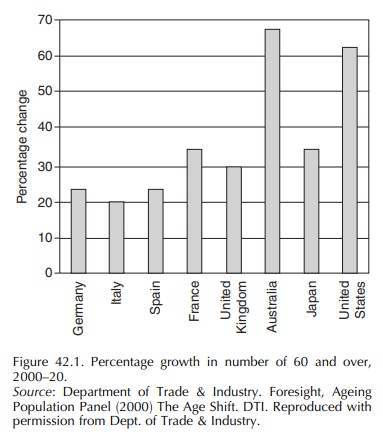The Ageing Population and Changing Demography
| Home | | Pharmacovigilance |Chapter: Pharmacovigilance: Drugs and the Elderly
The past century has seen major changes in the age structure of Western countries.
Drugs and the
Elderly
THE AGEING POPULATION AND
CHANGING DEMOGRAPHY
The
past century has seen major changes in the age structure of Western countries.
For example, Ameri-cans and UK citizens live far longer than previously. Thus,
a person born in the United States at the beginning of the twentieth century
could expect to live to around 49 years while the life expectancy at the end of
the century was 76.5 years, a gain of over 27 years (Olshansky, Carnes and
Desesquelles, 2001).
These
changes have been brought about by an improved standard of living with better
housing, clean water and immunisation programmes, together with better medical
treatments, especially drugs. The past 50 years have also seen a major change
in the age structure of the population. In 1951, the population of England and
Wales contained 4.83 million persons aged 65 or over, but by 30 years later,
the figure had risen to 7.57 million and now exceeds 8 million elderly people.
More important is the number of old elderly persons (over 75 years), the number
of whom has roughly doubled in the same time period. These trends over time are
set to continue, and it is forecast that there will be continued expansion of
the elderly population over the next 30 years (Figure 42.1).

Related Topics
